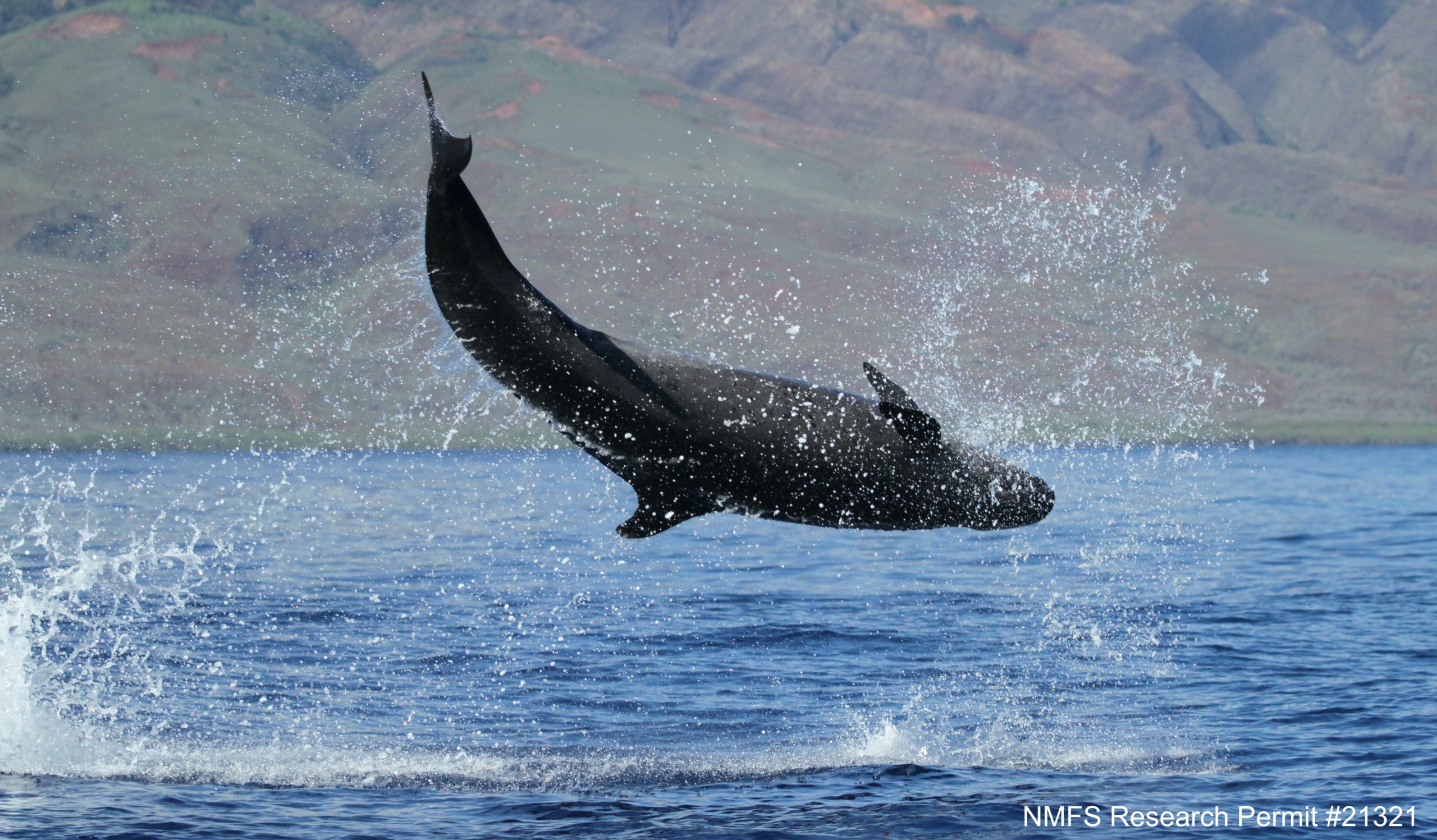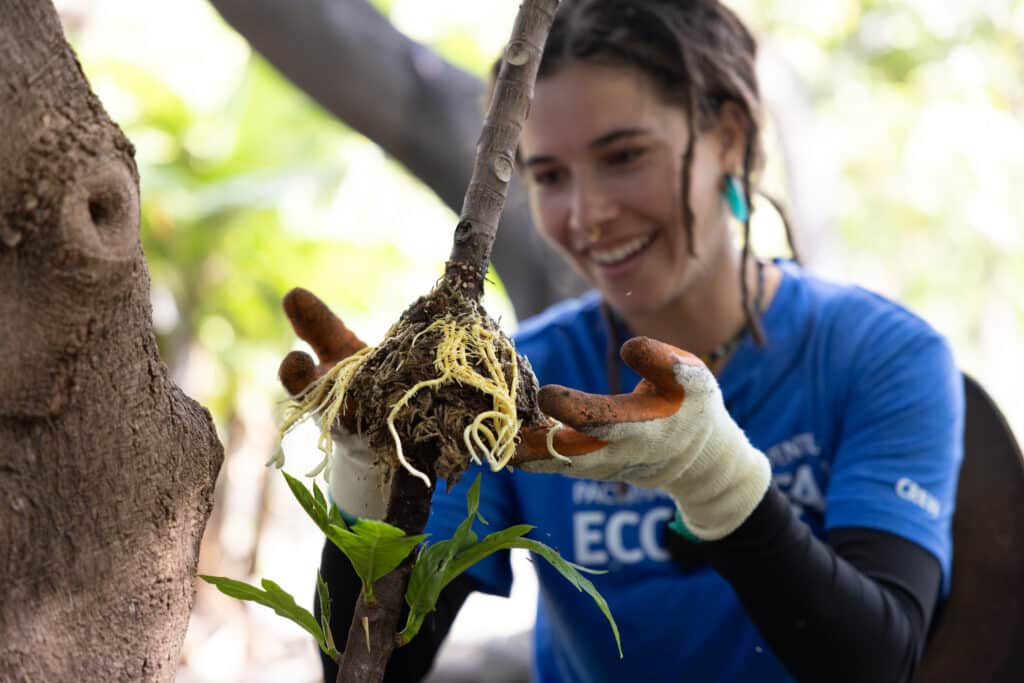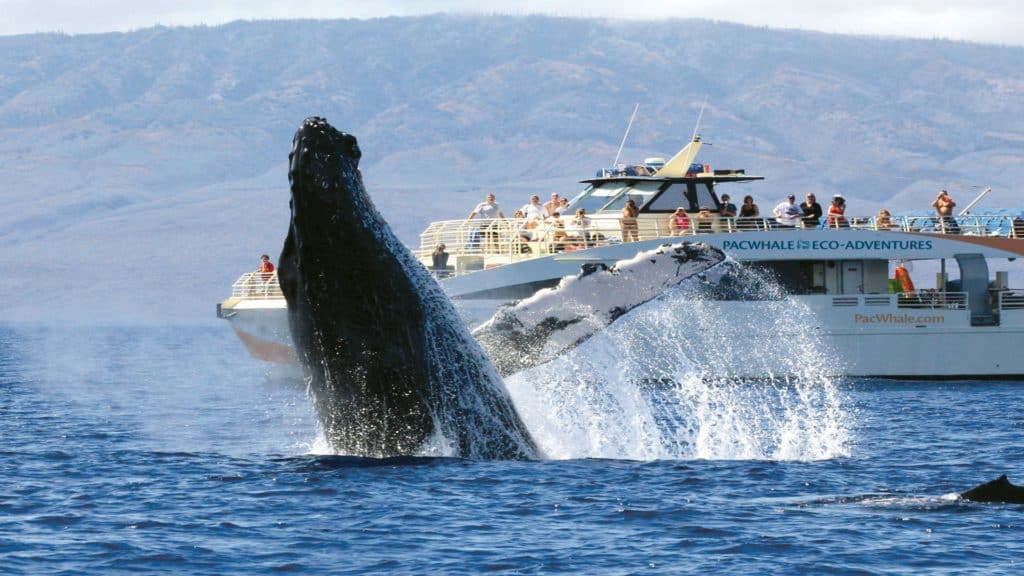Today, May 20, is Endangered Species Day, a day to celebrate, learn about and take action to protect threatened and endangered species. One of Pacific Whale Foundation’s (PWF) top research priorities is studying the endangered population of false killer whales found in Hawai‘i. False killer whales (Pseudorca crassidens) are a large species of dolphin belonging to a dolphin group known as the “blackfish.” Once thought to be extinct, false killer whales were named after the discovery of fossils that resembled the skull and teeth of “killer whales” (orcas).
PWF began conducting research on false killer whales in Maui Nui more than 20 years ago, beginning with the first photographed individual that was added to our catalog in 1998. Since that time, our research, in conjunction with other studies, has found that sighting rates of false killer whales around the Main Hawaii Islands (MHI) have significantly declined over the past two decades.
A Biological Review Team formed in 2010 identified 20-plus threats negatively impacting Hawai‘i’s false killer whales. Of the 29 listed, interaction with fisheries, or bycatch, was determined a substantial threat to population health. Unintentional hooking of nontargeted species (such as false killer whales and other cetaceans), fishing gear entanglement and competition with commercial fisheries for food sources — all of which fall under the bycatch umbrella — were among several recognized factors inhibiting species’ recovery.
In 2012, the MHI population of false killer whales was listed as “endangered” under the Endangered Species Act (ESA), with an estimated 150-200 individuals remaining in the population.
To address the incidental mortality and serious injury of false killer whales in Hawaii-based deep-set and shallow-set longline fisheries, our researchers actively engage with and contribute data to the False Killer Whale Take Reduction Team — an extension of NOAA Fisheries’ network of Take Reduction Teams that focus on species with high incidences of marine mammal bycatch.
Following their ESA designation, false killer whales became a priority species for PWF research and study, but their low numbers and wide-ranging habitat (all of the Main Hawaiian Islands) made it difficult to encounter them regularly in the field.
In 2018 we began using drones to measure the body condition and size of each individual false killer whale to better understand individual and population health and link these data to various threats affecting the population. To help increase our encounters with false killer whales, we reached out to the on-water community in Maui Nui and launched a False Killer Whale Rapid Response Program. We encouraged and continue to encourage ocean users to report their false killer whale sightings to our hotline, 888-256-9840, so that we can launch our dedicated research vessel when false killer whales are within Maui Nui waters, enabling us to collect much-needed scientific data. Since the launch of the hotline, we have seen a significant increase in our sightings of false killer whales. Thank you to everyone who has called in a sighting!
The main objectives of our false killer whale research are to:
- Continue long-term monitoring efforts to determine the life history traits, movement and distribution patterns of the population
- Use photo-identification to provide updated abundance estimates for management purposes
- Use drones, photogrammetry and underwater footage to assess growth rates, detect pregnancy, examine behavior and assess overall health status
This year, we plan to continue this work with a focus on:
- Comparing body condition between social clusters and individuals to see if they are a healthy weight
- Estimating the age-structure of false killer whales in the endangered population (i.e. how many calves, sub-adults and adults are there?)
- Sharing our photo identification data with NOAA’s Pacific Islands Fisheries Science Center and Cascadia Research Collective to produce an updated abundance estimate (i.e. how many are there today and how does this compare to previous counts?)
- Beginning a collaborative project with the University of Hawai‘i at Manoa’s Marine Mammal Research Program to better understand the role that prey resources and body condition (i.e. health) have on feeding success and link this to various threats and stressors that may impact foraging activity

We want to extend a huge mahalo to our partners, specifically the Marine Mammal Research Program, Cascadia Research Collective and Pacific Island Fisheries Science Center, and to all of PWF’s supporters for contributing to our critical research on Hawaiʻi’s endangered false killer whales. This population faces numerous natural and man-made threats that are impacting their ability to recover. Every piece of information we can learn about them will assist in collaborative efforts to effectively protect them and lead to their recovery.
Stay up to date on all of our work at Pacific Whale Foundation and follow us on Facebook, Instagram, and Twitter and join our email list HERE.
Help us save this endangered population by adopting a false killer whale today!
Learn more about false killer whales and our efforts to better understand and protect them.

